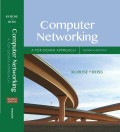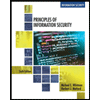
Transport Layer:
Transport layer is used for transferring the data or messages between the nodes and the devices. The data is sent in the form of blocks or segments. It is used to establish the end-to-end connection between the source and the destination.
Network Layer:
Network layer is provides the path in which the data packets are transferred from the source to the destination. It also helps in converting the logical or IP address to physical or Media Access Control (MAC) address.
Internet Protocol:
Internet protocol is a process or protocol in which data is transferred between the computer systems through internet. Each computer system has its own IP address to send or receive the required data. It consists of five different layers namely, application layer, transport layer, network layer, link layer and physical layer.
Datagram:
- In networking, a datagram is a transferring unit which is used to transfer the data from a source to the destination and it doesn’t provide guaranteed service.
- It includes fragmentation process which is defined as the division of the data packet into small one when the data packets are larger than the maximum length of a particular system.
Want to see the full answer?
Check out a sample textbook solution
Chapter 4 Solutions
EBK COMPUTER NETWORKING
- The TCP/IP Internet protocol stack is composed of five layers. How are they referred to? Is each layer in this system assigned a main function? What kind of material is used to encapsulate segments of a transport layer? the network layer of a datagram? Perhaps in a frame for a connection layer?arrow_forwardConsider the datagrams of each layer in the TCP/IP model, e.g., Frame at the Link Layer, Packet at the Internet Layer. Explain the functioning of the following protocols based on their datagram header fields only. Note: You do not need to describe the header field but based on the header field, explain how the protocol works, e.g., Acknowledgement field in a TCP Header is responsible for providing reliable data transfer and in case of data loss or ACK not received, segment is re-sent. You do not need to consider every field of the headers but wherever there are more than 4 fields, then based on 5 fields, describe its functioning, if less than or equal to 4 fields then consider all the fields. Ethernet Frame 11 Frame IPv4 Packet IPv6 Packet TCP Segment UDP Segment HTTParrow_forwardSuppose you are hired to design a reliable byte-stream protocol that uses a sliding window (like TCP). This protocol will run over a 50-Mbps network, the RTT of the network is 80 ms and the maximum segment lifetime is 60 seconds. How many bits would you include in the Advertised Window and Sequence Num fields of your protocol header?arrow_forward
- - Suppose a TCP message that contains 1024 bytes of data and 20 bytes of TCP header is passed to IP for delivery across two networks interconnected by a router (i.e., it travels from the source host to a router to the destination host). The first network has an MTU of 1024 bytes; the second has an MTU of 576 bytes. Each network's MTU gives the size of the largest IP datagram that can be carried in a link-layer frame. Give the sizes and offsets of the sequence of fragments delivered to the network layer at the destination host. Assume all IP headers are 20 bytes.arrow_forwardCreate a chart that begins with the OSI Seven-layer model on the left-hand side. Next, a column that describes the function of the layer. Then a column that lists the Protocol Data Units (such as Datagrams, Frames, etc) that correspond to each layer in the OSI model. Continue this process for the major hardware or software applications that function in each layer (not all layers have corresponding applications). The last column should be the TCP/IP model aligned to the appropriate layers of the OSI seven-layer model. This should result in a document that looks something like the chart tab (with the blank spaces filled in!)arrow_forwardIn transport layer protocols, acknowledgements are one of the techniques available (such as the RDT 2.0 protocol that we covered before). Is it possible for an acknowledgement to be contaminated in some way? So, what is the process in place to deal with this situation?arrow_forward
- Provide an example of a protocol at each of the TCP/IP model layers, for example that you have used in the above. Also give an example of overhead added in each of these protocols, e.g. a field in the protocol header. If possible, provide information on the maximum size of each packet, and the size of the header, of each of these example protocols.arrow_forwardThe maximum transmission unit on an Ethernet link is 4500 bytes. This means that the IP packets sent over Ethernet cannot be larger than 4500 bytes including the IP header. Suppose the application layer sends a 6500-byte message. The transport layer uses TCP with no options. The network layer is using IP version 4. Obviously, the IP layer will have to fragment the data. Provide the length of new datagrams (after fragmentation). Provide the Flag and offset of each of the new datagrams.arrow_forwardProvide short answers to the following: How do you determine whether an IP address is a multicast address? What is the TTL field in the IP header used for? What is the maximum length of options bytes that can be carried in an IPv4 header? Why do we have to multiply the offset field of an IP datagram by eight to obtain the real offset for the first byte of the datagram?arrow_forward
- Suppose an extension of TCP allows window size much larger than 64 KB. Assume the extended TCP runs over a 100-Mbps link with RTT 100 ms, segment size is 1 KB, and receiving window size is 1 MB. How long does it take to send a 200 KB file?arrow_forwardOne of the techniques used in transport layer protocols is the receipt of acknowledgements (such as the RDT 2.0 protocol that we covered before). Is it possible for an acknowledgement to be contaminated in any way? What process has been put in place to deal with this situation?arrow_forwardWhen designing Elementary data connection protocols, what kind of assumptions were made?arrow_forward
 Principles of Information Security (MindTap Cours...Computer ScienceISBN:9781337102063Author:Michael E. Whitman, Herbert J. MattordPublisher:Cengage Learning
Principles of Information Security (MindTap Cours...Computer ScienceISBN:9781337102063Author:Michael E. Whitman, Herbert J. MattordPublisher:Cengage Learning Systems ArchitectureComputer ScienceISBN:9781305080195Author:Stephen D. BurdPublisher:Cengage Learning
Systems ArchitectureComputer ScienceISBN:9781305080195Author:Stephen D. BurdPublisher:Cengage Learning

